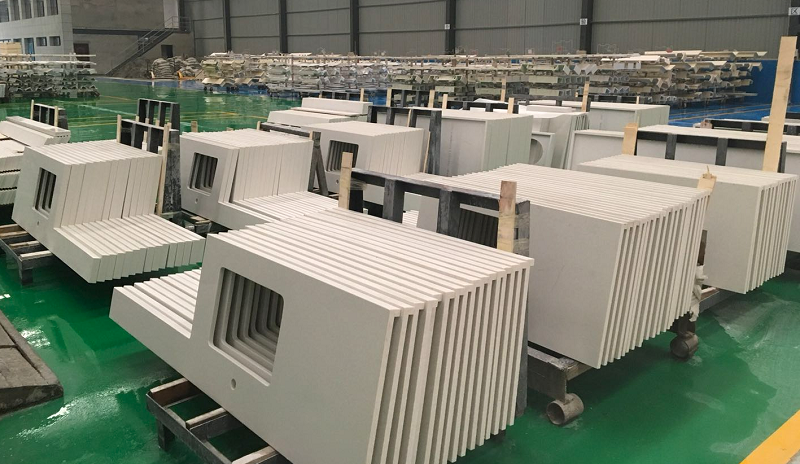Engineering stone is transforming design by merging strength, beauty, and adaptability into one material. Engineers combine crushed natural stone with specially formulated resins and polymers, resulting in a durable surface that delights in both form and function. You’ll find it in everything from warm, welcoming rooms to striking exterior cladding. In this post, we’ll explore its key applications, unique advantages, and its role in shaping tomorrow’s spaces.
Engineering Stone in Interior Design
Engineering stone truly excels within indoor environments. It mimics the luxurious appearance of natural stone yet boasts greater toughness, which makes it the go-to material for countertops, floors, and wall cladding. In kitchens and bathrooms, its stain, scratch, and moisture resistance surpasses that of its natural counterpart, offering peace of mind in high-traffic areas. Available in a limitless range of hues and veining patterns, it empowers designers to create custom looks that embody each client’s personal taste, resulting in spaces that feel both unique and cohesive.
Architectural Applications
Architects and builders are big fans of engineered stone because it blends stunning visuals with solid performance. Since it weighs less than natural stone, crews can handle it and install it more quickly. This saves time, cuts labor costs, and keeps schedules on track. The material can be curved and tapered in ways that real stone simply can’t, unlocking fresh, creative forms. Whether it’s a striking façade on a sleek tower or a finely detailed edge in a cozy home, engineered stone is becoming a staple in more designs, uplifting everything from living rooms to boardrooms.
Sustainable Design Solutions
Modern projects often have to pass strict eco-checks, and engineered stone shines. Many brands now craft it from recycled stone and glass, so there’s no need to open new quarries or transport heavy blocks long distances. The result is a smaller carbon footprint and a happier planet. Designers can tick the sustainability box without sacrificing beauty or performance, making engineered stone the preferred pick for anyone who wants to marry planet-friendly choices with exceptional design.
Outdoor Applications
When it comes to outdoor spaces, engineering stone really shines. Rain, sun, or frost don’t leave a mark, making it the go-to choice for patios, walkways, and pool decks. Its non-porous surface means no water seepage and no mold, so your surfaces stay fresh and safe. If you’re worried about slipping, you can choose textured finishes that combine good looks with secure footing. Style and safety? Check and check.
Future Trends in Engineering Stone Design
The future of engineering stone looks even brighter. Better tools and smarter processes will keep pushing the limits of finishes and design. Combined with the growing love for biophilic design—bringing the outdoors in—people will choose engineering stone for its natural beauty that’s also a cinch to maintain. Plus, as smart homes take off, expect to see engineering stone hiding sensors and controls right in the surface, giving you elegance that works harder for you.
In short, engineering stone isn’t just a trend. It’s a revolutionary material that’s influencing modern design. Its flexibility, green credentials, and diverse looks are winning over architects and designers around the globe. As tech and imagination keep evolving, we’ll keep discovering newer, smarter uses for engineering stone, locking in its place in the future of design.

